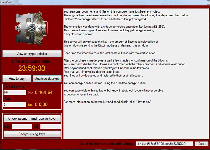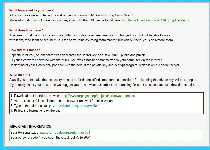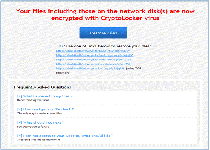CoinVault
Posted: November 13, 2014
Threat Metric
The following fields listed on the Threat Meter containing a specific value, are explained in detail below:
Threat Level: The threat level scale goes from 1 to 10 where 10 is the highest level of severity and 1 is the lowest level of severity. Each specific level is relative to the threat's consistent assessed behaviors collected from SpyHunter's risk assessment model.
Detection Count: The collective number of confirmed and suspected cases of a particular malware threat. The detection count is calculated from infected PCs retrieved from diagnostic and scan log reports generated by SpyHunter.
Volume Count: Similar to the detection count, the Volume Count is specifically based on the number of confirmed and suspected threats infecting systems on a daily basis. High volume counts usually represent a popular threat but may or may not have infected a large number of systems. High detection count threats could lay dormant and have a low volume count. Criteria for Volume Count is relative to a daily detection count.
Trend Path: The Trend Path, utilizing an up arrow, down arrow or equal symbol, represents the level of recent movement of a particular threat. Up arrows represent an increase, down arrows represent a decline and the equal symbol represent no change to a threat's recent movement.
% Impact (Last 7 Days): This demonstrates a 7-day period change in the frequency of a malware threat infecting PCs. The percentage impact correlates directly to the current Trend Path to determine a rise or decline in the percentage.
| Threat Level: | 10/10 |
|---|---|
| Infected PCs: | 12 |
| First Seen: | November 12, 2014 |
|---|---|
| Last Seen: | January 9, 2019 |
| OS(es) Affected: | Windows |
 CoinVault is detected as encryption threat, also known as ransomware. When the system is infected with ransomware, your files are encrypted, and users need to pay a 'ransom' if they want to regain control of their computer. CoinVault ransomware is quite similar to the CryptoWall 2.0 ransomware, still CoinVault is the less sophisticated variant. Once you have CoinVault on your computer, most of your files will be encrypted. There is an option for a one-time free decryption, but in the end, you have no choice but to pay the ransom. Once infected with CoinVault, users are forced to pay 0.7 Bitcoin ransom or their system remains locked; additionally, there is a timer that causes the cost to get higher, which is also quite disturbing. In order to prevent your system from ransomware such as CoinVault, computer threat specialists advise users to be extremely cautious for spam emails with corrupted attachments.
CoinVault is detected as encryption threat, also known as ransomware. When the system is infected with ransomware, your files are encrypted, and users need to pay a 'ransom' if they want to regain control of their computer. CoinVault ransomware is quite similar to the CryptoWall 2.0 ransomware, still CoinVault is the less sophisticated variant. Once you have CoinVault on your computer, most of your files will be encrypted. There is an option for a one-time free decryption, but in the end, you have no choice but to pay the ransom. Once infected with CoinVault, users are forced to pay 0.7 Bitcoin ransom or their system remains locked; additionally, there is a timer that causes the cost to get higher, which is also quite disturbing. In order to prevent your system from ransomware such as CoinVault, computer threat specialists advise users to be extremely cautious for spam emails with corrupted attachments.


Technical Details
File System Modifications
Tutorials: If you wish to learn how to remove malware components manually, you can read the tutorials on how to find malware, kill unwanted processes, remove malicious DLLs and delete other harmful files. Always be sure to back up your PC before making any changes.
The following files were created in the system:%TEMP%\352382_readme.txt
File name: 352382_readme.txtSize: 772B (772 bytes)
MD5: f6a2bb17bf99a4dab08f75504bf270b3
Detection count: 70
Mime Type: unknown/txt
Path: %TEMP%
Group: Malware file
Last Updated: January 20, 2016
Leave a Reply
Please note that we are not able to assist with billing and support issues regarding SpyHunter or other products. If you're having issues with SpyHunter, please get in touch with SpyHunter customer support through your SpyHunter . If you have SpyHunter billing questions, we recommend you check the Billing FAQ. For general suggestions or feedback, contact us.